
The City Chambers or Municipal Buildings in Glasgow, Scotland, has functioned as the headquarters of Glasgow City Council since 1996, and of preceding forms of municipal government in the city since 1889. It is located on the eastern side of the city's George Square. It is a Category A listed building.

Hampton Court Palace is a Grade I listed royal palace in the London Borough of Richmond upon Thames, 12 miles southwest and upstream of central London on the River Thames. Opened to the public, the palace is managed by Historic Royal Palaces, a charity set up to preserve several unoccupied royal properties.

Sir Thomas Gresham the Elder was an English merchant and financier who acted on behalf of King Edward VI (1547–1553) and Edward's half-sisters, queens Mary I (1553–1558) and Elizabeth I (1558–1603). In 1565 Gresham founded the Royal Exchange in the City of London.

Tower 42, commonly known as the NatWest Tower, is a 183-metre-tall (600 ft) skyscraper in the City of London. It is the sixth-tallest tower in the City of London and the 19th-tallest in London overall. Its original name was the National Westminster Tower, having been built to house NatWest's international headquarters. Seen from above, the shape of the tower resembles that of the NatWest logo.

The Worshipful Company of Mercers is the premier livery company of the City of London and ranks first in the order of precedence of the Companies. It is the first of the Great Twelve City Livery Companies.

Sir John Robert Steell was a Scottish sculptor. He modelled many of the leading figures of Scottish history and culture, and is best known for a number of sculptures displayed in Edinburgh, including the statue of Sir Walter Scott at the base of the Scott Monument.

William Behnes was a British sculptor of the early 19th century.
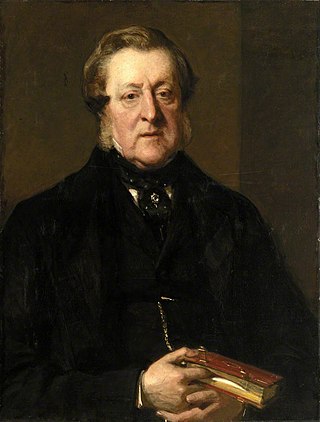
Sir William Tite was an English architect who twice served as President of the Royal Institute of British Architects. He was particularly associated with various London buildings, with railway stations and cemetery projects. He was the Member of Parliament (MP) for Bath from 1855 until his death.

Baron Pietro Carlo Giovanni Battista Marochetti was an Italian-born French sculptor who worked in France, Italy and Britain. He completed many public sculptures, often in a neo-classical style, plus reliefs, memorials and large equestrian monuments in bronze and marble. In 1848, Marochetti settled in England, where he received commissions from Queen Victoria. Marochetti received great recognition during his lifetime, being made a baron in Italy and was awarded the Legion of Honour by the French government.

Cornhill is a ward and street in the City of London, the historic nucleus and financial centre of modern London, England. The street runs between Bank Junction and Leadenhall Street.

Gresham's School is a public school in Holt, Norfolk, England, one of the top thirty International Baccalaureate schools in England.

Sir Richard Clough, known by his Welsh contemporaries as Rhisiart Clwch, was a merchant from Denbigh, north-east Wales, and an agent of Queen Elizabeth I of England.

Windsor Castle is a royal residence at Windsor in the English county of Berkshire. It is strongly associated with the English and succeeding British royal family, and embodies almost a millennium of architectural history.

Deacon Shem Drowne was a colonial coppersmith and tinplate worker in Boston, Massachusetts, and was America's first documented weathervane maker. He is most famous for the grasshopper weathervane atop of Faneuil Hall, well known as a symbol of Boston.
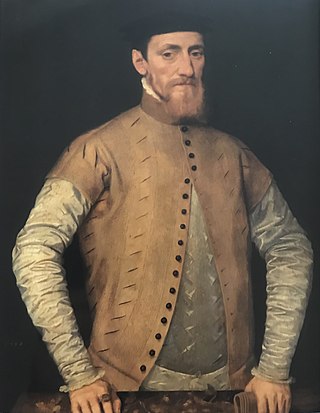
Sir John Gresham was an English merchant, courtier and financier who worked for King Henry VIII of England, Cardinal Wolsey and Thomas Cromwell. He was Lord Mayor of London and founded Gresham's School. He was the brother of Sir Richard Gresham.
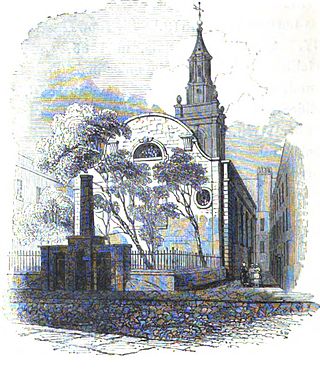
St Michael Bassishaw, or Basinshaw, was a parish church in Basinghall Street in the City of London, standing on land now occupied by the Barbican Centre complex. Recorded since the 12th century, the church was destroyed in the Great Fire of 1666, then rebuilt by the office of Sir Christopher Wren. The rebuilt church was demolished in 1900.
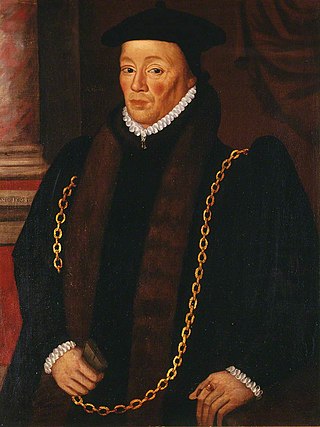
Sir William Garrard (1518–1571), also Garrett, Gerrarde, etc., was a Tudor magnate of London, a merchant citizen in the Worshipful Company of Haberdashers, who became alderman, Sheriff (1552–1553) and Lord Mayor of London (1555–1556) and was returned as an MP for the City of London. He was a senior founding officer of the Company of Merchant Adventurers to New Lands in 1554/55, having been involved in its enterprises since the beginnings in King Edward VI's time, and for the last decade of his life was one of its permanent governors. He worked hard and invested largely to expand English overseas trade not only to Russia and the Levant but also to the Barbary Coast and to West Africa and Guinea.
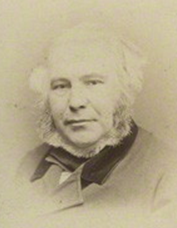
Edward Bowring Stephens, was a British sculptor from Devon. He was honorary secretary of the Institute of Sculptors circa 1861.

The equestrian statue of the Duke of Wellington is an outdoor sculpture of Arthur Wellesley, 1st Duke of Wellington, a British soldier and statesman, located at the Royal Exchange in London. It overlooks Bank junction in the historic City of London. The sculptor was Francis Leggatt Chantrey. The statue commemorates Wellington's assistance to the City of London in ensuring that a bill was passed to allow the rebuilding of London Bridge.

The bourse at Antwerp is a building in Antwerp, Belgium, which was first opened in 1531 as the world's first purpose-built commodity exchange. The Royal Exchange in London was modelled on the Antwerp bourse. The bourse has been described as "the mother of all stock exchanges".


































